By Emily Poltor; Theater (Ohio Wesleyan University) ’17
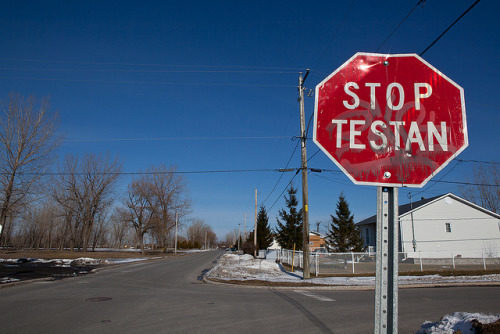
On the first Friday in November, a few friends and myself met in the Academic Center in Montreal bundled up and wearing shoes to walk in. We piled into a large white van together and took off on that day’s journey — our destination: Kahnawake, a Mohawak reservation on the other side of the Mercier Bridge.
The first thing I noticed when we crossed into Kahnawake was the stop signs — they didn’t have the French word arrêt like the island, but the English word stop followed by the Mohawk word testan. We also quickly learned that in Kahnawake, they do not have street names or house numbers — the tight knit community knows where everything is and where everyone lives.
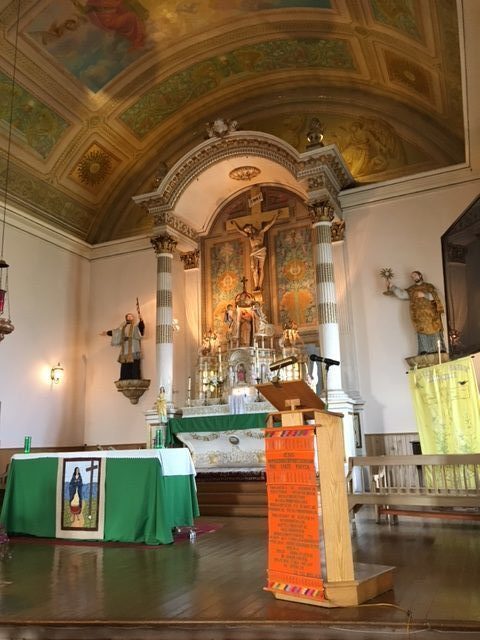
Our first stop was the church dedicated to Saint Kateri Tekakwitha — a First Nations woman who ascended to sainthood. The small church carrying her name is of humble size, yet bursting with love. Each squeak of the original floorboards declares its history. Along the walls of the church are scenes from the Bible with the text underneath in Mohawk. This feature is unique to this church in Kahnawake. Just behind the main rooms of the church is a small museum of paintings and art done in Kateri’s honor. What I was most drawn to were elaborate pieces of beading and traditional garments worn by members of the church.
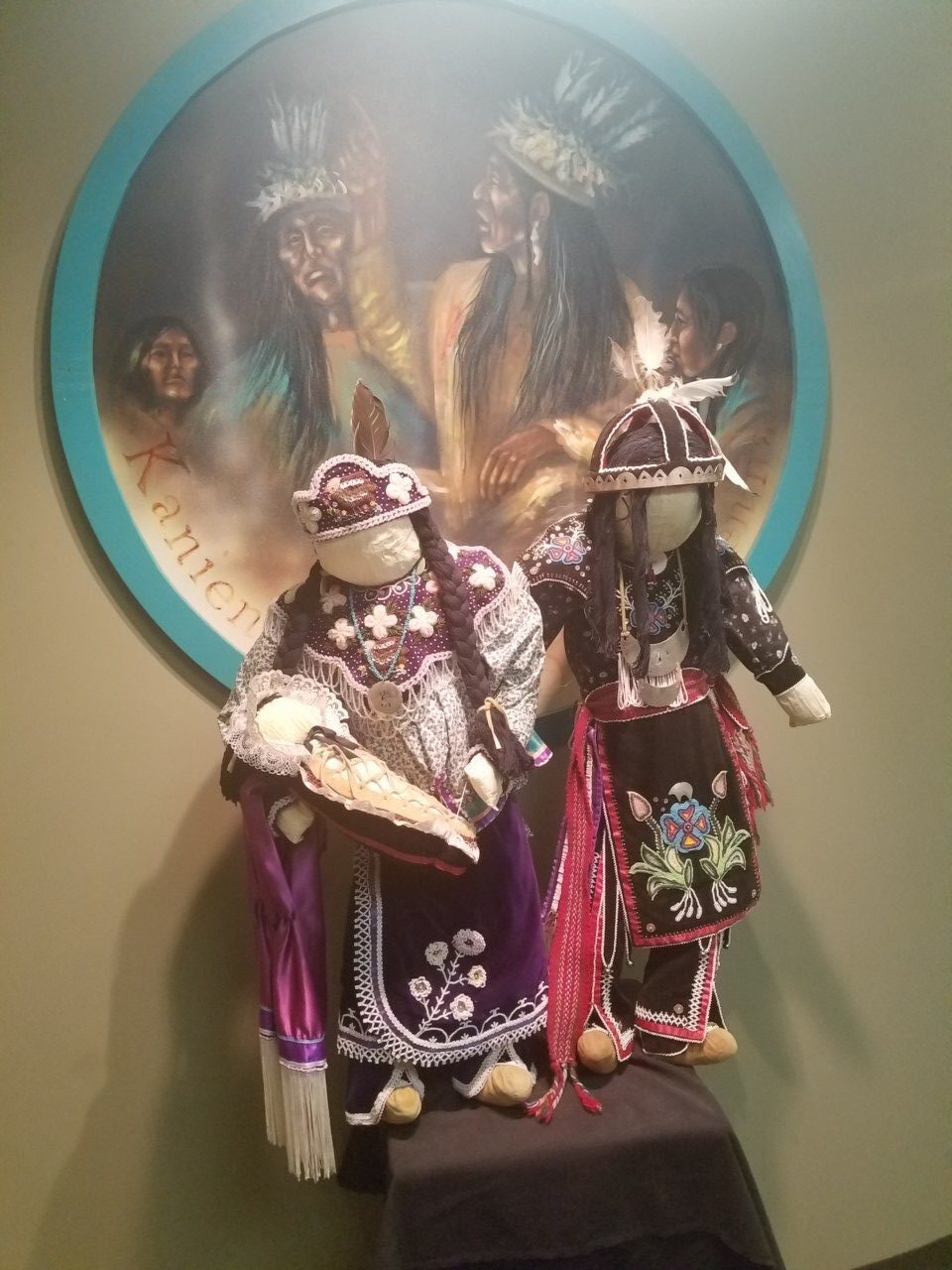
From there we took a short ride in our van to the cultural and language center in Kahnawake. We went through another small museum dedicated to the history of Kahnawake and to the history of the Mohawk people. We saw traditional clothing, pottery, and an original canoe. We learned about important events like first contact and the Oka Crisis, a very important part of recent history for First Nations Peoples in Canada.
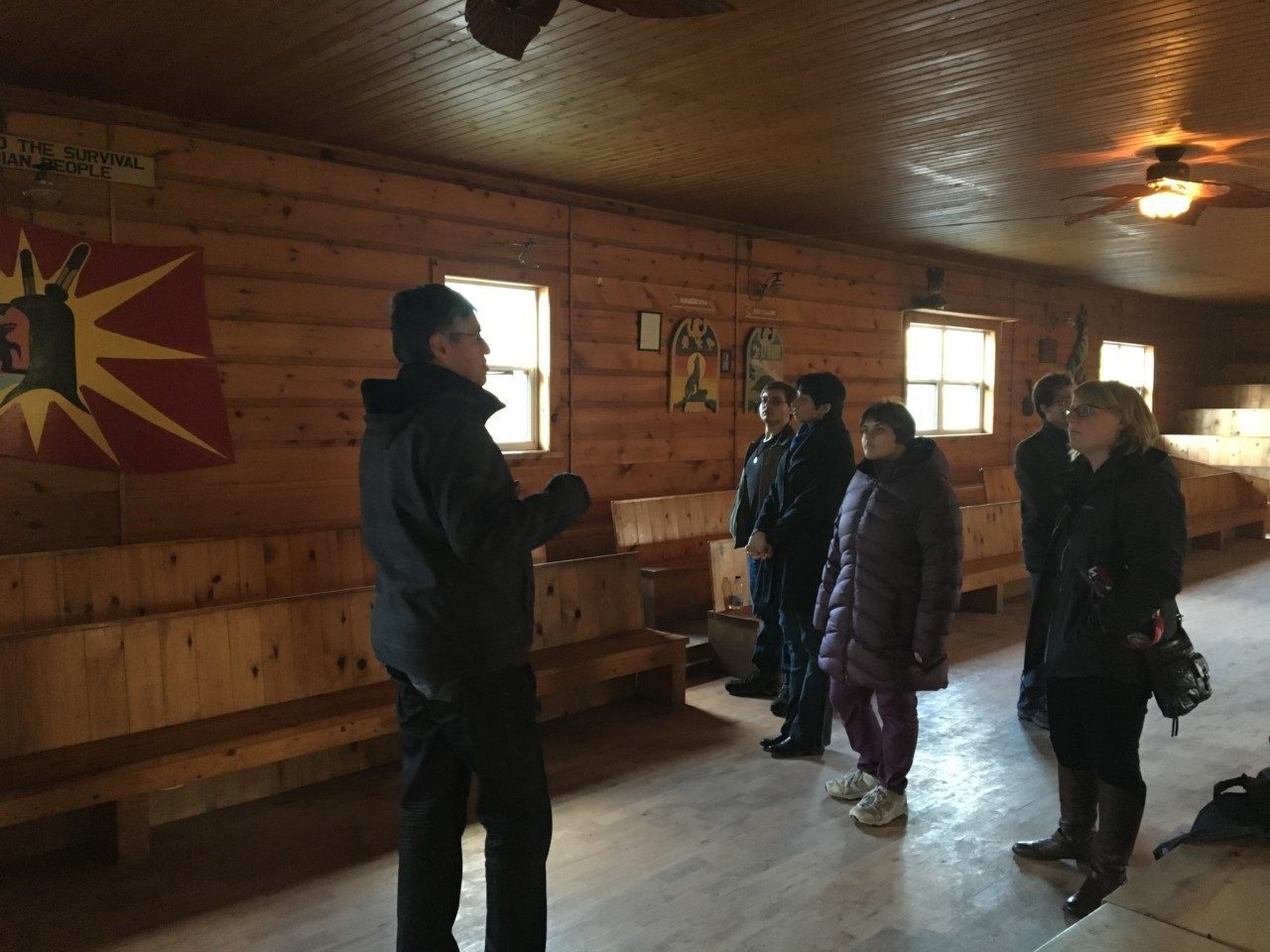
We also had a chance to learn about the three clans in Kahnawake — the bear, turtle, and wolf. Each person is born into a clan and — since Mohawk is matriarchal — when a woman marries, her husband would then become a part of her clan. My favorite thing I learned at the cultural center was the Mohawk creation story. In this story, a pregnant woman falls onto the back of a turtle and creates all that we know on its back. I find this story to be beautiful and all throughout Kahnawake were murals of turtles with trees growing on its back. Also, as someone passionate about languages, I feel it important to note that this is where anyone can come to learn the Mohawk language.
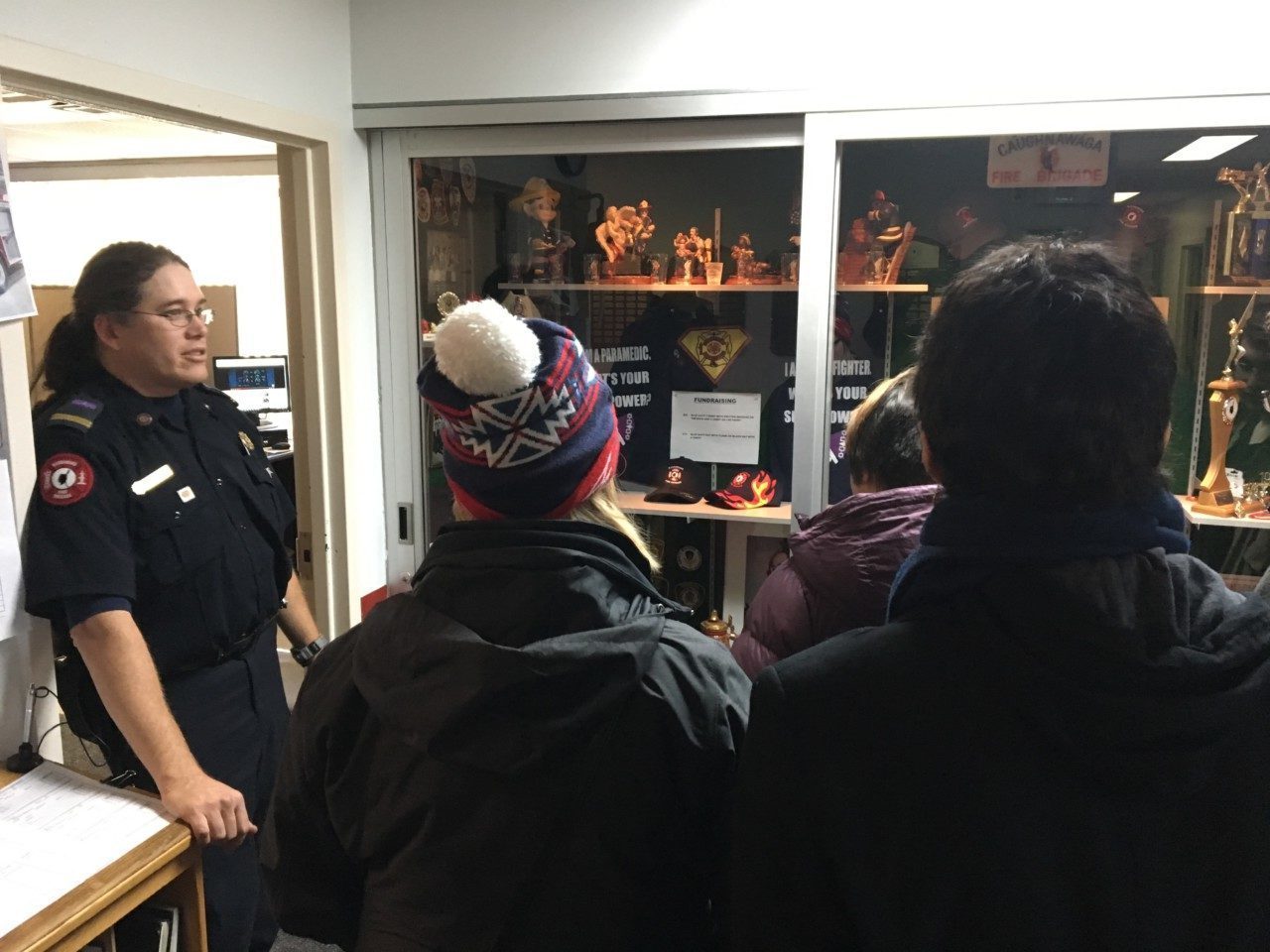
From the cultural and language center we went out to different places in the community. We went to a longhouse — whose overwhelming pine scent and warmth coming solely from wood burning ovens gave me insight on how our ancestors lived. Images of turtles, bears, and wolves lined the walls of this space used for meetings, ceremonies, and funerals.
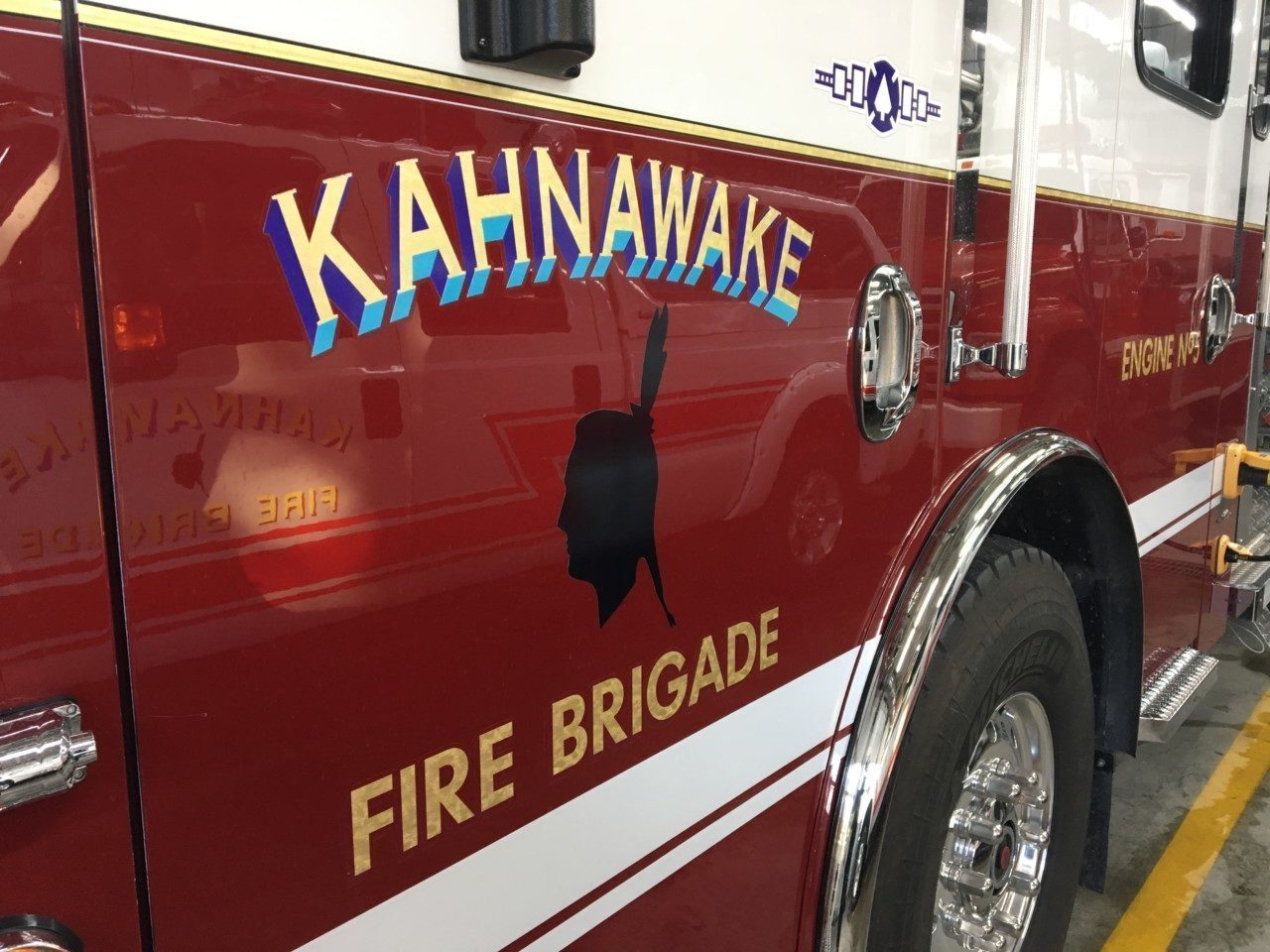
Perhaps one of our most exciting stops was at the local fire station. We were greeted and welcomed into the volunteer driven station with a warm smile from a kind man. He showed us all around the stations — starting of course with the trucks. Despite living close to fire stations both at home and at school, I have never actually been inside the garage of a fire department. The trucks that respond only to the area of Kahnawake are powerfully large and iconically red with Kahnawake Fire Brigade written on both sides of the cabin. Our impromptu tour of the small station ended with a series of handshakes from our welcoming guide and we were off to our next stop in the early November cold.
Our last stop was most humbling. A part of Kahnawake that I have not mentioned yet is that this community famously known for its skill in ironworking. Every step of our journey through Kahnawake involved a tribute or reminder of the workers’ skills. Workers from Kahnawake have jobs all across Canada and the United States — people from Kahnawake have dual citizenship, making it easy for them to work in the US without a visa. In the dying light of the late afternoon in November, our final stop was a memorial along the river to the iron workers who lost their lives in the Quebec Bridge Disaster in 1907. In a grassy area along the riverside, accentuated by the reds and yellows of fall, my colleagues and I quietly walked through the memorial to the 35 Kahnawake men who lost their lives in the disaster, sometimes pausing to look at the photo accompanying their names. It was somber, yet peaceful in location. It is far from the noise of Montreal and with no industrialized sights along the river, it is easy to breathe in the life and beauty of Quebec.
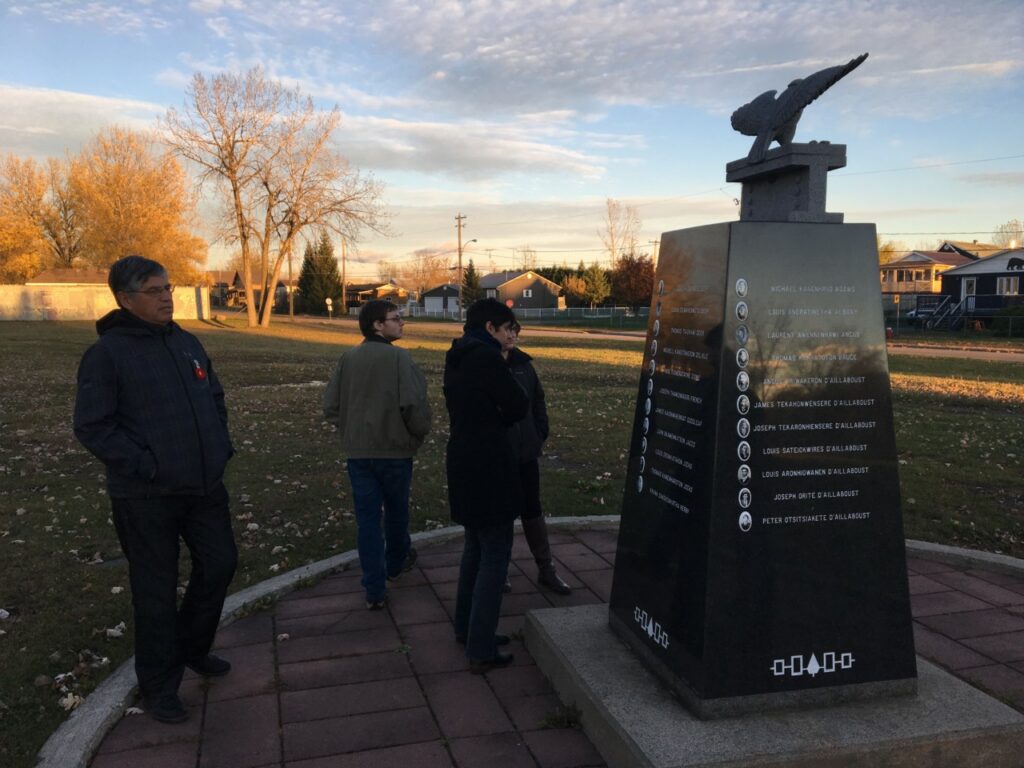
In all of my travels, I have never met a more welcoming group of people. Our small tour was always met with gratitude for our visit and answers to our questions. Whether it was the older man at the longhouse who bid us to come back whenever we please, or the employees of the fire station who answered all our questions with a smile, the warmth we received in Kahnawake is not something I will forget any time soon. Our visit was short, but I learned a great deal from our cultural exchange at Kahnawake.